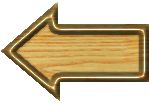Tibetan Buddhist "sky burial"
H-ASIA
October 11, 1999
************************************
From: Mondo Secter (secter@sfu.ca)
Subject: Tianzang ("sky-burial")
Sky Burial - A Secret Solemn Sacred Burial Ritual
This is not an area of research but something I am sharing from my personal experience.
I was witness to a sky burial on the outskirts of Lhasa, where we were visiting in
the summer 1986 after teaching for a year in central China. We had heard of the
sky burials but were informed that witnessing the sky burial had been
banned / closed / off limits to foreigners for some time. After a week one
of our western friends there got word that there had been a quiet
semi-official shift in policy - and that a few of us would be able to
witness this ritual. This brief window opened up for about a half-a-dozen
of us and we felt quite honored.
We had to get up at about 4:00AM and bike as a group quite a way from the
center of town. Then we had to walk quite a distance across the high
desert, and then climb up to the top of a rocky ledge overlooking the
relatively flat burial rock about 40-50 feet away.
One of the Tibetans walked around us bathing us in incense, and speaking
in simple Chinese making sure we understood the protocol, manners, and 'no
pictures.'
There were a few dead bodies wrapped in cloth. We sat huddled on the
ledge in the morning chill air just as the dawn was breaking. I wondered
what mystery had made this profound experience possible and what had drawn
these people who had just recently met in Lhasa together.
The bodies are not simply exposed but are calmly cut up (butchered). The
flesh is tossed to an area for the birds, and the birds are "called" with a
special sound or noise. It probably took about 15-20 minutes for the birds
to come - a few dozen in all vying for the spoils. The bones were hacked or
broken into smaller pieces and tossed aside to where the vultures would
swoop down and peck at the flesh or make off with the meat and bone. The
affair was not a harried one but a rather solemn and methodical process
that must have lasted for a little over an hour.
When it was over I felt a sense of deep connection to the rhythm of life and
to the universe. I reflected on the fact that these bodies had not suffered
the indignity of worms and maggots. This was a haunting experience that in
some ways is still fresh in my mind. I am almost reluctant to talk about it
but I have decided to share this in the hope that it might be a helpful and
useful contribution to this discussion.
Again, as this is not my area of research I don't think I can contribute
anything more.
H-ASIA
October 21, 1999
************************************
From: Alex Mckay
Subject: Tibetan practice of sky-burial
The primary reason for the practice of 'sky-burials' in Tibet is almost certainly a very prosaic one: - a lack of fuel to burn corpses and ground too hard for easy burial. Thus the origins of the practice are almost certainly pre-Buddhist, although as sky-burials leave no traces this is difficult to prove. Historically the kings of the Yarlung dynasty were, after elaborate ceremonies for which there is textual evidence, entombed in mounds, but the absence of burial sites for lesser mortals in that period suggests this was the preserve of the nobility.
The remains of Dalai Lamas and other high Buddhist figures are preserved in stupas or encased in gold and other precious objects. Certain types of corpse, such as smallpox victims are or were also reportedly cast into rivers and apparently fish are not commonly eaten there for this reason.
But there is a very Buddhist concept by which sky-burials are understood: the giving of one's body to feed the vultures is a last act of generosity to living beings, with a Buddhist precedent -- a popular myth tells of how the Buddha in one incarnation gave himself to feed a hungry tiger.
While the association of Buddhism with non-violence is in many ways a recent construct, the body itself is of course (at least in theory) of no importance, merely a transitory vehicle, and hence its being butchered is of no account - certainly it is not seen as a violent act
(although in practise there are elements of impurity associated with the 'butchers' who are members of the ragyaba, a socially marginal group.)
There is nothing to suggest this is a practice influenced by the Chinese. Certainly in modern China it is regarded with revulsion. As with so many other elements of Tibetan cultural expression contemporary sky-burial carries an implicit message of Tibetan identity. In September 1984 (at which time there were no restrictions on Westerners viewing Lhasa sky-burials imposed by either Chinese or Tibetans) I witnessed unwelcome Chinese sight-seers being chased away by one of the 'butchers' wielding a corpse's arm as a weapon - he eventually threw it at them!
Alex McKay
